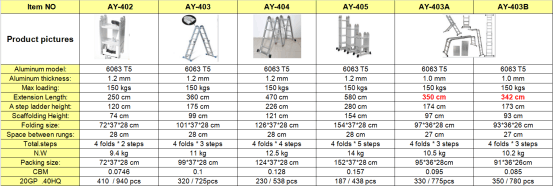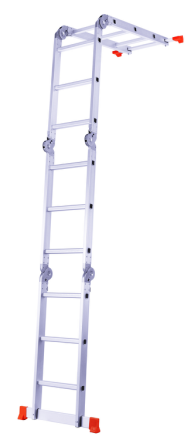Information Society Book Market Digital Print Media
At the beginning of the 21st century, not only the digital-based on-demand book (BOD) prospects are promising, but also the prospects of the book market are promising. Statistical information confirms that since 1990, the production of books in Germany has increased by about a quarter, which is definitely not the result of Germany’s reunification.
Another "big book country" - the United Kingdom also showed a similar trend, its book production in the 5 years (up to 1996) increased by more than 15%. From 1970 to 1991, the number of books published worldwide increased from 521,000 to 863,000 (book titles), of which from 246,000 to only 430,000 in Europe alone, and its share accounted for almost 47% of global book production (UN. UNESCO Statistical Yearbook 1999).
The Future of Books For the future of books and print media, not only the book and printing industries, publishers and authors, cultural workers and scientists are expected, it is even convinced that traditional and modern (electronic) media will co-exist and even merge with each other.
According to the book magazine’s estimate, the publication of popular pocket books in 2000 was 4.5% less than in 1999. At the same time, the annual plan of the literary press was also reduced, which means that the book delivery plan was reduced, so that people’s books market in Germany is absolutely absolute. Not surprised.
Pater Glotz (currently a professor at St. Gallen University), a scientist in the communications industry, wrote last year: “In principle, in the face of powerful television, books still firmly maintain their status as media.... Book media will continue in the spiritual life of the nation. Play an important role."
The Opportunities of the Sci-Tech Literature In the information society, that is, the digital age, despite the rapid development of the Internet and e-commerce, hardware and software products are constantly improving and the price is becoming cheaper, but for science and technology books, the outlook is undoubtedly good.
In the total sales of the German book market, the share of audiovisual media accounted for only 1.9% (1999); although the amount of books sold through the Internet has increased significantly, it only accounts for about 1% of the total sales of the book market. According to the US publisher Klaus G.Saur, 8% of the reference books printed today are in electronic format, and the remaining 90% are still in book form. German scientific literature, professional books and textbooks account for 35% of total professional sales (estimated total of over 18 billion marks in 1999), and professional and scientific magazines account for 10%. Between 1990 and 1995, the share of scientific and technological texts from European countries, the United States, and Japan increased from 73.3% to 74.8%.
According to an analysis by UNESCO in 1999, compared with the number of science and technology publications in various countries since 1984, the United States, Britain, Japan, Germany, and France are regarded as leading countries in science. During this period, mainly after 1990, the share of scientific and technological publications in South Korea, China, Taiwan Province of China, Singapore, Turkey, and Portugal exceeded the average growth rate (between 24.5% and 10.8%). At the same time, the share of Russia, the Czech Republic, India, Hungary, and Bulgaria was decreasing.
The share of scientific and technological literature in 20 countries is the same: Germany is only in the middle reaches, even slightly below the average (16.3% in 1996). Countries such as Japan, the United States, and the United Kingdom, as well as Finland, Sweden, and Switzerland, have published more applied sciences, including medical and technical books. This cannot be explained simply from the structure of the country’s publishing industry and even from the fact that statistics are not reliable.
The most reliable prospects of German publishing houses are entirely dependent on scientific literature, whether books, magazines, CD-ROMs, or on demand (BOD) products. In this way, the evaluation of the biologist Hubert Markl (Professor of Constantine University) deserves attention. He regards Germany’s future in the information and knowledge society as a continuation of the development of human civilization as a whole and a combination of the actual talents of all intelligence. The future of utilization ... will become an absolutely necessary prerequisite for its future survival."
More time to study, more money to buy books to re-optimize the German book industry, not started in the Allensbacher market analysis of Gutenberg in 2000. 73% of Germans (14+) love books, 56% of Germans read at least one book per month, more women than men, and 1 in 6 people even use books every day. Half of the citizens had purchased books in the past 12 months; the middle-income family of four spent 28 Deutschemark per month for books, and 39 DM for newspapers and magazines.
Shortly before the end of 2000, Reading Foundation of Mainz published its latest German reading behavior survey report, saying that compared with 1992, the number of people who read books every day is greatly reduced; only when people relax, that is, there is time to read on the weekend. Book. Only 31% of people are interested in literary books; 45% of Germans do not read or read very little. This is also the same as their survey shows, pure literary works can only be understood as novels, poetry, etc., and their share of German publications is less than 20% (calculated on the first edition).
The bulk of the book business has long been specialized books (over 40% of the first edition), high-priced professional literature, and address books and textbooks. Of the 12 highest-selling German publishing groups, 9 do not publish literary books. In 1999, a total of 51.04 million books were published by German publishing companies, valued at 7.27 billion marks, which is less than 2% from the previous year.
A survey of printing products from the second media revolution from Karlsruhe announced optimistically: Fraunhof Institute for Systems Technology and Innovation (ISI) predicts that by 2015 (compared to 1995) the time budget for the use of media in Germany The overall increase has increased – from 390 minutes to 430 minutes a day. The future is mainly for online/internet, but the print media’s share has decreased slightly – from 55 minutes to 47 minutes. By 2015, the personal spending on print media will increase from 52 to 65 marks per month; investment in terminal equipment will increase by a factor of 3 to reach DM mark 210. In the United States, the growth rate of expenditures for media in the United States has reached 7% each year. Not only books traditionally and still printed today with modern technology will have a future, but magazines and other print media that are often forgotten are equally promising. In 1999, 3,490 professional magazines were published by the German publishing house, with an estimated circulation of 5.20 million, an increase of 2% to 3% over the previous year. Therefore, the publisher's annual sales amounted to 4.36 billion marks (+2.1%). There are 150 new professional newspapers listed and 250 published. Contrast: About 2,000 professional magazines were published in 1990, with sales of about 4.8 million copies and sales of 2.34 billion marks.
Leipzig’s media status In the printing and publishing industry in Saxony, Leipzig has reached 21% of sales. The media economy in Leipzig is in a period of youth, growth and flexibility. As deputy mayor Detlef Schubert said in the report, Leipzig has the most important media status in East Germany after Berlin, with 1,500 companies and more than 40,000 employees, with sales of 6.12 billion marks (1999). One in every seven jobs in Leipzig has settled down in the media industry. Since 1990, companies in the media industry have overwhelmingly prevailed. One in five companies has only been established in the past two years. From September to October 2000, 728 companies from the Leipzig district asked about one in four companies that were wholly owned.
The printing and publishing industry, including the press, ranks the second highest in the media economy with sales of 20.9%, second only to data processing, hardware and software, and interactive media (= 54.5%). The printing and publishing industry that once dominated the city remains important, especially because many older companies in this industry have more workers. However, the lack of positive development of the printing industry and publishers in recent years has shown that they are not satisfied with the status of Leipzig. The status of the cultural media sector, as well as the radio and film industry are all satisfactory. There are more than 7,000 employees in these departments (6,000 temporary workers).
The Saxony state media commissioner Michael Sagurna, optimistic about the recent developments in media status, stated that Leipzig has established an additional educational institution for the information, communication and media economy and that the "media school" implemented in 2001 will be used as the university and its 3 institutions. Common plans for colleges and universities.
Summary Today about 500 years after the invention of Gutenberg, the rapid development of science and technology is undergoing a “second media revolutionâ€, and at the same time it requires the general public to study the topic of “media capabilities†in depth. Romano Prodi, chairman of the European Commission, believes that in the “2002eEurope†action plan passed last year, he responded to the comprehensive transition to a knowledge society. The digital revolution has enabled Europe to realize its creative and cultural potential.
One of Aluminum Ladder - Multipurpose Ladder is very popular all over the world because of it`s special and traditional design.It conforms to EN131. Strong aluminum construction with safety lock steel hinges .It`s pretty steady with twin stabiliser bars featuring large rubber feet.
Multipurpose ladder can be used by many shapes while it`s easy to fold and extend .The max load of multipurpose ladder is 150KGS. You can climb to roof by it`s straight ladder . You can use it as bridge while tools can be putted on the platform . And it`s can be A type shape ladder . Which types of multipurpose ladder you choose .Our multipurpose ladder would be the most convenient assistant for your life ..
More details as follows :

Accessories:







FAQ:
Q: Are you factory or trading company ?
A: We are factory , exported foreign over decade with rich experiences .
Q: We can change the color of the rubber cover ?
A: yes , the regular is black , you also choose other color .
Q:What`s the MOQ ?
A: 50 PCS.
Q: Can I have a sample ?
A: It`s ok .
Q:What`s your price ?
A: It`s depends on your demands, quantity , we can offer you lowest price .
Q:What`s your delivery time ?
A: Sample order : 3days , bulk order : 23-25days .
Q: Can we use our logo or brand on the package ?
A: yes , OEM is ok .
Q: What`s the payment :
A: (1) T/T: 30% deposit be paid in advance , the 70% of total payment see the copy of B/L.
(2) L/C it`s ok .
(3) Cash also ok .
More inquires or questions , plz feel free to contact us !
Welcome to visit our factory !
Multipurpose Ladder
Multipurpose Ladder,Aluminum Multipurpose Ladder,Aluminum Multifunction Ladder,Multipurpose Ladder With Hinges
Yongkang Aoyi Industry&Trade Co., Ltd. , http://www.aoyiladder.com